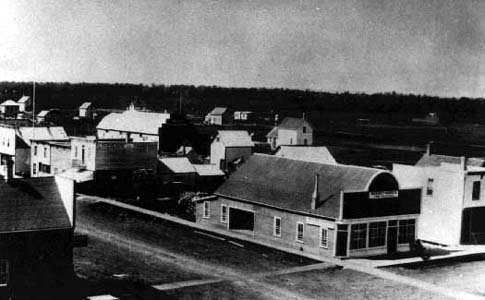Search | Image Archive | Reference | Communities | POV | Lesson Plans | Credits
 Lake Dauphin has for centuries been a place of gathering. Historically, the Dauphin Hills were boundary lands between Cree, Ojibwa and the Assiniboine. It was a region rich in game and fish. The deeply forested areas nearby offered both protection in the winter and an abundance of spruce and birch, materials essential to the construction of vessels from drinking cups to canoes. For this reason, the area was an important site of trade and diplomacy.
Lake Dauphin has for centuries been a place of gathering. Historically, the Dauphin Hills were boundary lands between Cree, Ojibwa and the Assiniboine. It was a region rich in game and fish. The deeply forested areas nearby offered both protection in the winter and an abundance of spruce and birch, materials essential to the construction of vessels from drinking cups to canoes. For this reason, the area was an important site of trade and diplomacy.
It was this same abundance that attracted the European fur traders when they first arrived in the 1730s, and in 1741, the first Fort Dauphin was established. The erection of this post marked the beginning of a period of one hundred years when the fur trade dominated in the region.
In 1781, the trade was halted when an epidemic of smallpox, a European illness to which Canada's aboriginals had little resistance, nearly wiped-out the Assiniboine people. The trade resumed in later years, and by 1820, so intense had been the trapping that the population of fur bearing animals was too small to support the fur trade, and the posts disappeared. Those who stayed in the area continued to trap, selling their furs at Riding Mountain House and Manitobah House, but until the 1880s, the population of was very small. By the 1870s a few took up farming, but with no roads, the market for their crops was limited, and they farmed mostly for subsistence. The only farmer of this era whose name survives was Gilbert Ross, a métis, for whom the community of Gilbert Plains was named.
The early 1880s marked the arrival of the first permanent European settlers. Many were refugees from the droughts and fires that swept the southern prairies in that decade. Before 1900, techniques for farming the semi-arid prairies had not yet been developed, and many crops perished, prompting farmers to look to the moister parkland region for a second chance.
In 1886, the first general store and post office for the region was established at "Dogtown," so named for the pack and sled dogs which were the hallmark of aboriginal and métis settlements. By 1893, Dogtown had a tinsmith, hardware dealer, pharmacist, doctor and even a boarding house and a custom threshing business. The old métis community had become distinctly British-Canadian.
In 1896, the shape of the region changed again. The railway came in that year, opening up non-local markets for the first time to the farmers. The townsite was re-located several miles to the south and called Dauphin, after the old fur trade post. In that same year, the area was visited by Dr. Joseph Oleskow, an Austrian philanthropist looking for an area to settle economic refugees from the Eastern Ukraine (Bukovina and Galicia), where there was a critical shortage of land.
In 1897, the first Ukrainian settlers arrived. Desperately poor and without the tools to begin farming, they spread out, looking for work on the road and railway crews or at the sawmills in order to raise the money to start farms. Within two years, many had established modest homesteads.
In 1899, the Ukrainian settlers faced a dramatic setback when prairie fires wiped out the communities of Keld and Valley River. The provincial government refused them disaster compensation on the grounds that they were refugees and thus "wards" of the federal government, and they were forced to rebuild without assistance. In the end, however, the Ukrainian community was able to re-establish itself, and with the infusion of more immigrants, grew to be the dominant population group by 1910.
Dauphin itself continued to grow through the first two decades of the century. A wood-fired generator provided electricity after 1906, and from 1911 to 1913, running water and sewers were installed. In 1913, Dauphin became seat of the newly created Northern Judicial District, and its position as the commercial centre for the region was firmly established.
Page revised: 4 March 2011